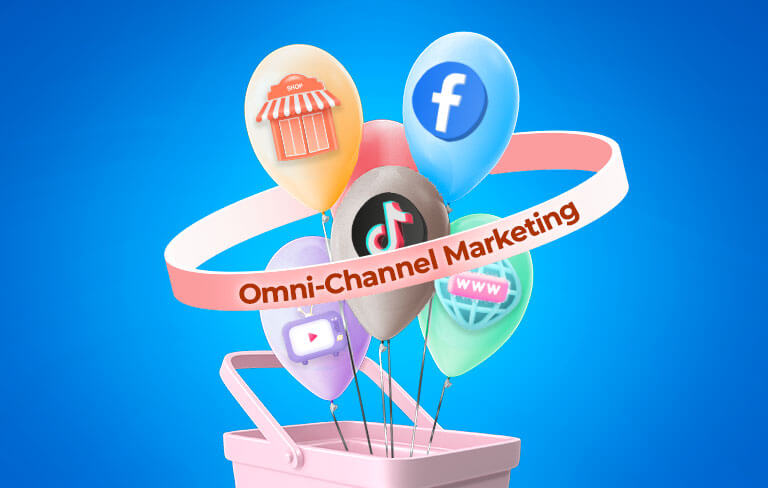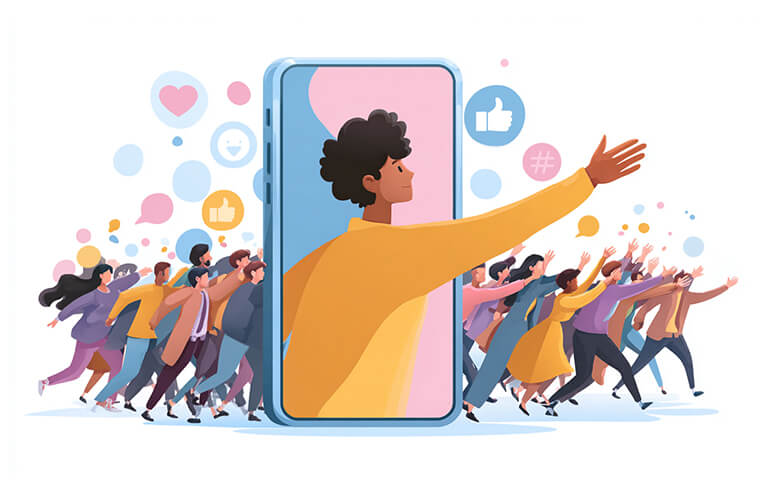In today’s fast-paced world, marketing is no longer about just one channel—it’s about meeting consumers wherever they are. With people switching between online research and in-store shopping, brands need to be present and seamless at every touchpoint. This article explores how omni-channel marketing, the evolving role of TV, and cross-media campaigns can transform the way brands connect with audiences. Dive in to discover how a unified, multi-platform strategy can create deeper, more lasting engagement with your customers.
The Omni-Channel Consumer Journey
Modern shoppers exhibit complex behavior patterns, often transitioning between online and offline channels. Terms like “webrooming” (researching products online before purchasing in-store) and “showrooming” (examining products in-store before buying online) are now integral to the consumer journey. Brands must create cohesive and integrated experiences across all platforms to capture this audience.
For example, our Yeo’s 2023 National Day campaign, which won the Markies Award for Most Effective Use – Omnichannel, showcased a seamless integration of in-person celebrations with an engaging digital campaign. Yeo’s collaborated with local singer Annette to create a National Day song, developed an AR filter and launched a microsite contest to drive consumer interaction and unity.
Other standout omni-channel campaigns include the NikePlus Program, which offers a seamless, personalized experience across various platforms. Members gain access to exclusive content, early product releases, and tailored services, whether they shop online or in-store. By integrating data from multiple touchpoints, Nike can better understand consumer behavior and deliver targeted experiences that foster loyalty.
The consumer journey is no longer linear. A shopper might begin their journey by researching a product online, visit a physical store to experience it firsthand, and finally make the purchase through an app or website. This seamless transition between channels highlights the need for brands to provide a unified and consistent experience, regardless of the platform.
The Importance of a Balanced Strategy
While the digital world offers brands countless opportunities to connect with consumers, it’s equally important to leverage offline channels. In-store engagements, physical touchpoints, and traditional advertising still play a crucial role in shaping purchase decisions. To drive impactful engagement and maximize reach, a balanced marketing strategy that integrates both online and offline elements is essential. For instance, Sunshine Bakeries’ ‘Heartier Taste of Better’ campaign successfully combined online promotions with physical activations at events, driving both awareness and trial, leading to a holistic consumer experience.
Brands that focus solely on online strategies might miss out on the significant segment of consumers who value the tactile experience of physical stores. Similarly, those that ignore digital platforms could lose touch with the tech-savvy generation that prefers online shopping. A well-rounded approach ensures that brands can cater to the diverse preferences of their audience.
The Role of Linear TV in a Digital Age
Despite the rise of digital platforms, linear TV remains a significant medium. Although viewership may be declining, a substantial portion of audiences still consume content via traditional TV. Marketers should not overlook this channel but instead, incorporate it into their broader strategy. By doing so, they can tap into a wider audience and enhance overall campaign effectiveness.
For example, Dettol’s 80th-anniversary campaign, successfully balanced digital and traditional touchpoints. Alongside digital campaigns and social media activations, Dettol’s multi-generational TV commercial reached older audiences, reinforcing the brand’s legacy of health and hygiene across generations. This 360° campaign saw over 7 million impressions through its combination of POSMs, social media engagement, and linear TV, ensuring that Dettol’s message resonated with both long-time consumers and a new generation of families.
Such integrated approaches, like Mashwire’s with Dettol, underscore the importance of combining digital channels with traditional ones to ensure a well-rounded and effective marketing strategy.
Linear TV provides a broad reach that is unparalleled by many digital platforms. It remains a staple in many households, and the trust and familiarity associated with TV advertising can add credibility to a brand. While digital ads offer precision targeting, TV ads can create a sense of shared experience and community among viewers.
The Power of Holistic Planning
Holistic planning involves integrating the strengths of both old and new media. By marrying traditional channels like linear TV with modern digital platforms, brands can achieve greater coverage and reach new audiences. For Solis Breast Care & Surgery, we have launched a Breast Cancer Awareness Month campaign to drive conversions for their clinic. They introduced a microsite with informative content on symptoms and screenings to improve search engine visibility. The creative concept, “Confidence through Clarity,” used a rose to highlight the advantages of 3D mammograms, helping users easily grasp the benefits. The campaign effectively combined digital and traditional channels, including print ads and SEM, resulting in quality leads and increased conversions.
This approach ensures that marketing efforts are comprehensive and adaptable to the varied preferences of consumers.
For instance, a campaign that combines TV commercials with social media promotions can capture attention across multiple touchpoints. TV ads can generate initial awareness, while social media can drive engagement and interaction. By using both, brands can create a more robust and effective marketing strategy.
The Rise of Streaming Platforms
Advertising on streaming platforms such as VIU and others has become increasingly popular. These platforms offer targeted advertising opportunities, allowing brands to reach specific demographics with tailored messages. Incorporating streaming platforms into marketing strategies can enhance engagement and deliver more personalised experiences to consumers.
Streaming services have the advantage of data-driven insights, enabling brands to create highly personalised ad experiences. They can target viewers based on their viewing habits, preferences, and demographics, resulting in more relevant and effective ads. As more consumers cut the cord and shift to streaming, this medium will continue to grow in importance.
The Necessity of Mixed Media Campaigns
Effective campaigns today require a blend of linear TV, Video on Demand (VOD), and online videos. Each medium has its unique strengths, and combining them can lead to improved outcomes. For instance, linear TV provides broad reach, VOD offers flexibility and convenience, and online videos enable interactive and engaging content.
A mixed media approach ensures that brands are visible wherever their audience is. While TV can build mass awareness, VOD and online videos can provide more detailed and interactive content that drives deeper engagement. This combination allows brands to maintain a consistent presence across different stages of the consumer journey.
Cross-Media Effects: A Key to Success
Cross-media campaigns, which utilise multiple screens and platforms, have been shown to significantly improve brand awareness, favorability, and ad recall. By creating cohesive and synchronised messages across different media, brands can reinforce their messaging and create a more memorable impact on consumers. Ignoring the cross-media effects can result in missed opportunities and diminished campaign effectiveness.
Research indicates that consumers who encounter a brand across various media are more likely to remember and engage with that brand. Consistent messaging across TV, online, and mobile platforms can amplify the overall impact of a campaign. It creates a synergistic effect where the whole is greater than the sum of its parts.
Conclusion
In the ever-evolving marketing landscape, brands must make full use of available resources and platforms to stay ahead. By adopting an omni-channel approach, balancing online and offline strategies, leveraging linear TV alongside digital platforms, and capitalising on cross-media effects, marketers can create comprehensive and impactful campaigns.
If you want to learn more on how to unlock the potential of both traditional and modern media, ensuring that brands connect with consumers effectively at every touchpoint, contact us today!





